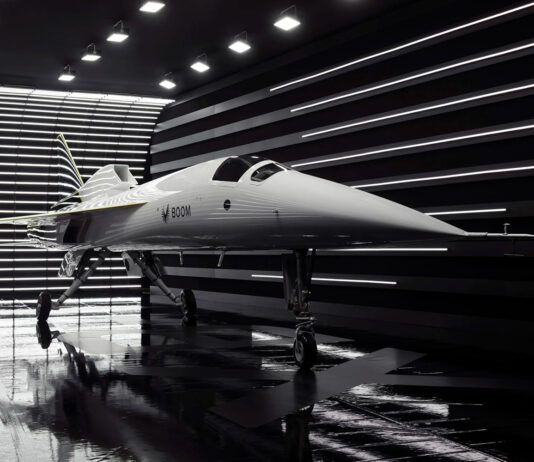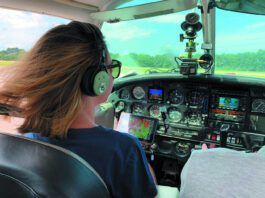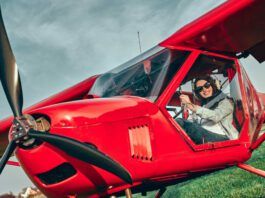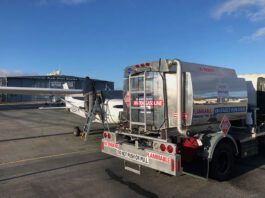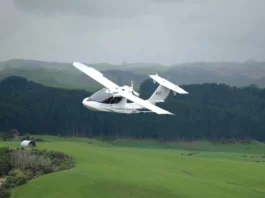Briefing: October 2019
The Air Force and tech company DZYNE have created an ungainly-looking device that can take off, fly and land an airplane like a human pilot and without tearing the aircraft apart. The Air Force Research Lab (AFRL) Center for Rapid Innovation flew a Cessna 206 with the ROBOpilot at the controls for two hours on Aug. 9 and said the idea is to make the machine interchangeable with human pilots. Imagine being able to rapidly and affordably convert a general aviation aircraft, like a Cessna or Piper, into an unmanned aerial vehicle, having it fly a mission autonomously, and then returning it back to its original manned configuration, said Dr. Alok Das, senior scientist with the Center for Rapid Innovation, in a statement. A video with the news release shows the robotic pilot making corrections to keep the centerline during takeoff and a bounced, but ultimately safe landing.
Briefing: September 2019
uAvionix is working on a wingtip ADS-B Out device that will work with satellite-based ADS-B systems that will be used in several countries and the U.S. system, which relies on ground stations. The skyBeacon X will pack upward and downward pointing antennas into a compact integrated device that will also replace a wingtip position light. The development project was spurred by contact from Canadian pilots who could be required to install ADS-B Out as early as 2023. Nav Canada, the not-for-profit corporation that supplies air traffic services in Canada, will use the Aireon satellite system for ADS-B surveillance and that requires antennas pointed skyward. Most ADS-B systems now available for GA aircraft are designed for the U.S. terrestrial system and the few that do offer the so-called antenna diversity required in Canada are significantly more expensive. uAvionix hopes to have the system ready for sale in 2021.
Briefing: August 2019
Allied Pilots Association President Daniel Carey vigorously defended the Ethiopian Airlines pilots who died when their Boeing 737 MAX overpowered their determined but ultimately futile attempts to keep the airplane from diving into the ground. Carey and several others testified at a hearing held by the Houses Subcommittee on Aviation as a stakeholder in the aftermath of the lengthy grounding of the new aircraft. Carey said public comments that cast doubt on the skills and professionalism of the Ethiopian crew are baseless and offensive. I am very familiar with Ethiopian Airs pilot training program and facilities, and I can tell you that they are world-class, he told committee members. To make the claim that these accidents would not happen to U.S.-trained pilots is presumptuous and not supported by fact. He also called for changes to the FAA certification process and warned of training shortcomings for pilots returning to the MAX with its new software.
Briefing: July 2019
A prominent Alaskan airline and tour company voluntarily ceased operations in late May after two fatal crashes involving its floatplanes in a week. A total of six people, most of them cruise ship passengers, died May 13 when two Taquan aircraft collided while taking the passengers on a flightseeing trip. On May 21, a pilot and passenger died when a Taquan commuter flight from Ketchikan to Metlakatla Harbor cartwheeled on landing and came to rest inverted with the cabin submerged. On May 22, the airline issued a statement saying it had stopped flying indefinitely and that the tragedies left the company and staff reeling.
Briefing: June 2019
Boeing 737 MAX pilots will get increased ground training on the aircrafts Maneuvering Characteristics Augmentation System (MCAS) but wont drill the anti-stall software in the sim according to updated training requirements under consideration by the FAA. The Boeing 737 MAX Flight Standardization Board (FSB) has sent draft recommendations to the agency saying MCAS ground training must address system description, functionality, associated failure conditions, and flight crew alerting. These items must be included in initial, upgrade, transition, differences, and recurrent training. To this point, there was no requirement for pilots to be trained on MCAS, which is an anti-stall system designed to push the nose of the aircraft down. In fact, many MAX pilots were unaware that it had been added to the aircraft to combat an increased tendency for the plane to pitch up because of the revised placement of the larger and more powerful LEAP engines.
Briefing: May 2019
Boeing took the first steps to get its 737 MAX aircraft back in the air in March with a software update to reduce the influence of an automated pitch control system and reduce the chances that it will trigger spuriously. The focus of the update is the Maneuvering Characteristics Augmentation System, which was chiefly designed to counter the MAXs tendency to pitch up at high angles of attack while being hand flown and push the nose over in the case of an impending stall. In the original design, MCAS used data from one of two angle of attack indicators to determine the deflection angle of the horizontal stabilizer. Its believed faulty data from an AOA played a role in the fatal crashes of a Lion Air MAX 8 last October and an Ethiopian Airlines MAX 8 in March. The new software is reported to draw data from both AOAs and limit the MCAS to moving the tail feathers only once, instead of repeatedly countering pilot inputs. Implementation of the software was expected in April after FAA review.
Briefing: April 2019
ADS-B innovator uAvionix is offering an online instruction program to qualify A&Ps to install its recently certified skyBeacon ADS-B Out device and its soon-to-be certified tailBeacon product. The skyBeacon adds the ADS-B transmitter to wingtip navigation or nav/strobe lights and requires no panel work or antenna installation. The tailBeacon replaces the position light on the tail. The simple system satisfies the FAAs Jan. 1, 2020 mandate requiring ADS-B Out on aircraft operating in almost all controlled airspace. The devices cost less than $2,000 and installation time is about an hour. The program is in response to demand from shops and independents across the country. uAvionix said it hopes to alleviate the building backlog of conventional ADS-B installations, which can take up to 25 hours of shop time.
Briefing: March 2019
The Airbus A220 became the smallest airliner to be approved for 180-minute extended diversion time operations (EDTO), formerly ETOPS, and that could open up lucrative transoceanic routes outside of the normal hubs. The former Bombardier CSeries program, which was acquired by Airbus in July of 2018, targets the 100-150-seat niche and the approval by Transport Canada widens the scope of operations for the highly regarded fly-by-wire airliner. The aircraft was also approved for steep approaches of up to six degrees last summer and with EDTO approval, direct flights from London City Centre Airport to the east coast of North America would be allowed. The approval will also allow the aircraft to be used between Hawaii and the western U.S.
Briefing: February 2019
On December 13, Virgin Galactics SpaceShip Two, VSS Unity, made its first trip to space, reaching an altitude of 51.4 miles, just above the 50-mile boundary defined by NASA. Today, for the first time in history, a crewed spaceship, built to carry private passengers, reached Space, said Virgin Galactic CEO Richard Branson. We will now push on with the remaining portion of our flight-test program. The commercial space sector has great potential, said FAA acting administrator Dan Elwell after the flight. The FAA is committed to helping ensure commercial space transportation grows safely. VSS Unity was lifted to 43,000 feet by the WhiteKnightTwo carrier aircraft, and carried a crew of two pilots, and four NASA experiments.
Briefing: January 2019
When a Lion Air Boeing 737 Max 8 with only 800 hours crashed into the ocean in November, killing all 189 on board, the event raised a lot of questions. It behaved erratically in flight before the crew lost control, and several crews had reported problems with the airplane in the days before.
Briefing: December 2018
Last year, the FAA offered a $500 rebate to aircraft operators who installed new equipment to meet the 2020 ADS-B mandate, but that offer expired in September 2017. Now the FAA has reinstated the program, with enough funding for 9,800 more rebates. The offer will end on October 11, 2019, or when the money runs out. The FAA has repeatedly said the compliance deadline wont be pushed back, and any aircraft lacking ADS-B-out wont be allowed to fly in most controlled airspace after Jan. 1, 2020. The ADS-B mandate is not going away, said FAA Acting Administrator Dan Elwell. Now is the time for aircraft owners to equip. More details can be found atwww.faa.gov/nextgen/equipadsb/.
Briefing: November 2018
Search-and-rescue delays after an airplane crash will become a thing of the past, with Aireons global satellite network in place, the company says. Aireon says the system will be ready to go online in 2019. As long as an aircraft is broadcasting on 1090 MHz ADS-B, we will be able to locate it anywhere worldwide, said Peter Kearney, CEO of the Irish Aviation Authority, one of the partners in the new system. General aviation users dont need to pre-register, but search-and-rescue teams can contact the company for location data. The rescue capability is offered as a free service to the aviation community, Aireon says.

